If all you know about Iran comes from watching Western news, you could be forgiven for thinking that Iranians are all malicious missile manufacturers and turban-clad terrorists.
In reality, this couldn’t be farther from the truth. In our experience, Iranians are, without a doubt, the friendliest and most hospitable people in the world.
3 tales of Iranian hospitality
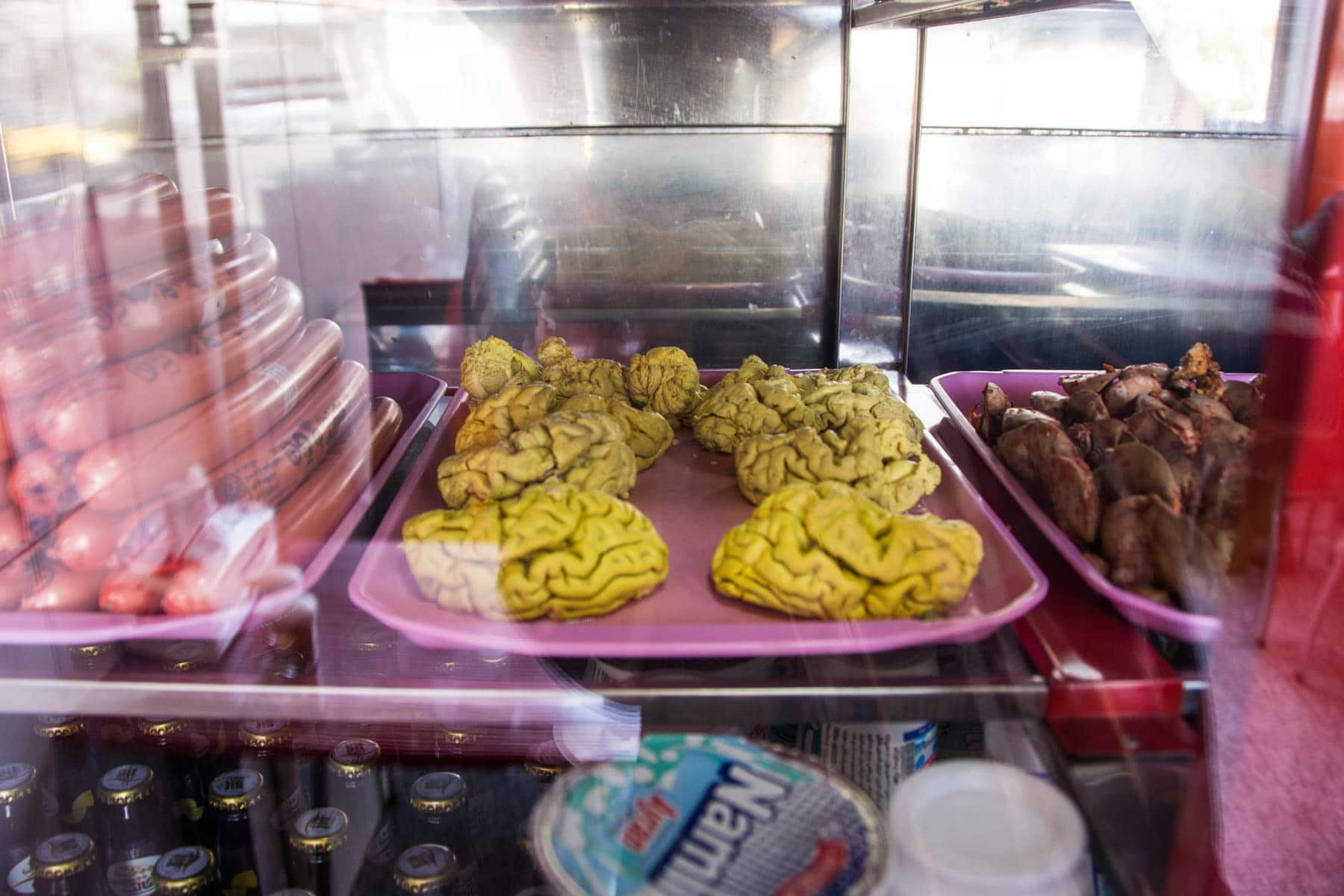
Would you like some baa-rains with your sandwich?
Sheep brain sandwiches
“The Dutch, they are all tall, yes? The tallest in the world?”
We nod. We’re sitting in a fast food joint with a 21-year-old man named Behzat, giving our aching feet some rest after hours of walking and talking. We encountered each other in a bustling alley of the Tabriz bazaar, migrated to have tea in his father’s store deep within the bazaar, then walked all over the city as he helped us on a quest to find hiking boots and a tent.
He’s munching on a sheep brain sandwich. He lets us try a couple of bites, and laughs at our reactions. The brains, sickly yellow in color, have the texture of old scrambled eggs, with a dash of curry.
“Let’s put it this way,” he continues on, in-between bites, “If you are not tall, you are not Dutch. If you are not hospitable, you are not Iranian.”
When all is said and done, we make an attempt to pay for his lunch, as a small way of saying thanks for all of his help. He refuses. He can’t accept our money–that’s not the Iranian way.
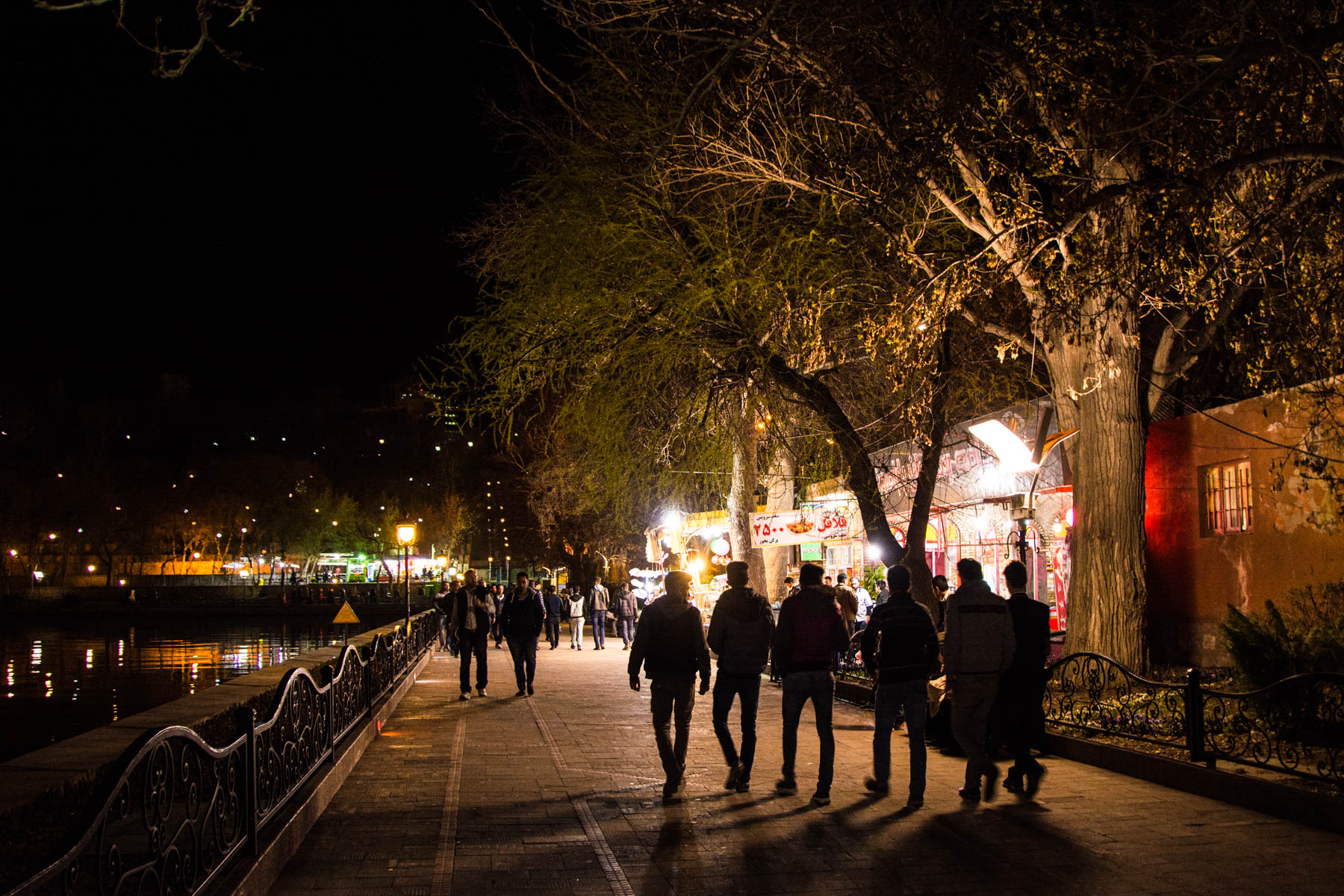
Shahgoli park in Tabriz is the place to be in the evenings.
I’m dangerous!
The air is chilly, but the atmosphere is electric. It’s evening time, and we’re walking through Shahgoli park, an amusement park and evening hangout space for many Tabrizians.
There are people strolling about in all directions, circling a central pond. Ice cream stands, cotton candy spinners, and sunflower seed vendors ring the walkway, all decorated with hot neon lights. Shouts and honking cars periodically puncture the background hum of city noise.
“The people go crazy! Because Tabriz football team, the Tractors, today they win. No city is so proud of team as Tabriz,” says our guide, a twenty-something Iranian girl whose name translates to “Butterfly”.
Walking with us is Butterfly’s family: a chipper younger sister, a shy but smiling mother, and an endearingly protective father. We’re walking off a dinner of ash, a hearty Iranian yogurt and noodle stew, compliments of Butterfly’s father.
We had met Butterfly in passing during the day. After asking us just three questions: Where are you from? Are you alone? and Do you have a translator? she invited us to her home. We ended up spending the day with her and her ever-bubbly friend, Rozhan.
We watched as they worked at their photo studio, Shakira blasting in the background. We went along for the ride as Butterfly drove maniacally through the streets of Tabriz–“I’m dangerous!” she giggled at one point, veering through a narrow gap between two cars. We were entertained by Rozhan’s jokes in broken English, laughing as she mimed to us how much she enjoys whiskey, and how screwed she’d be if caught drinking. Whenever broken English and miming wasn’t enough, we’d resort to Google Translate, often with ridiculous results.
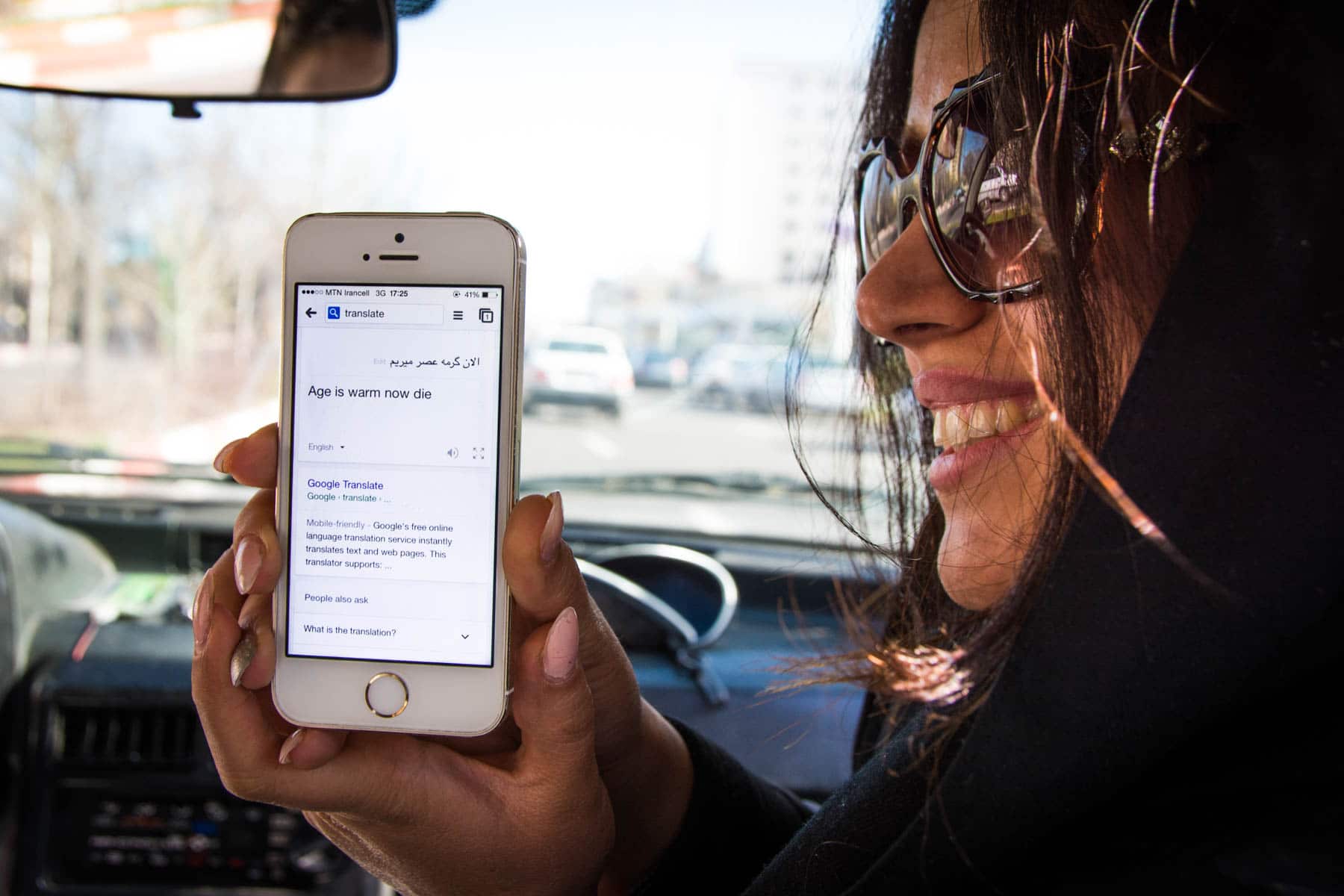
… somehow I don’t think that’s what she was trying to say…
Late in the evening, we emerge from the family’s tiny Peugeot car, after a cramped-but-cozy ride from Shahgoli back to our hotel. The entire family tumbles out of the car, coming forward to take our hands and kiss us goodnight, and goodbye.
As the car pulls away, we can still see Butterfly and her sister, waving to us through the back window.
Visiting Iran? Check out our two-week Iran itinerary!
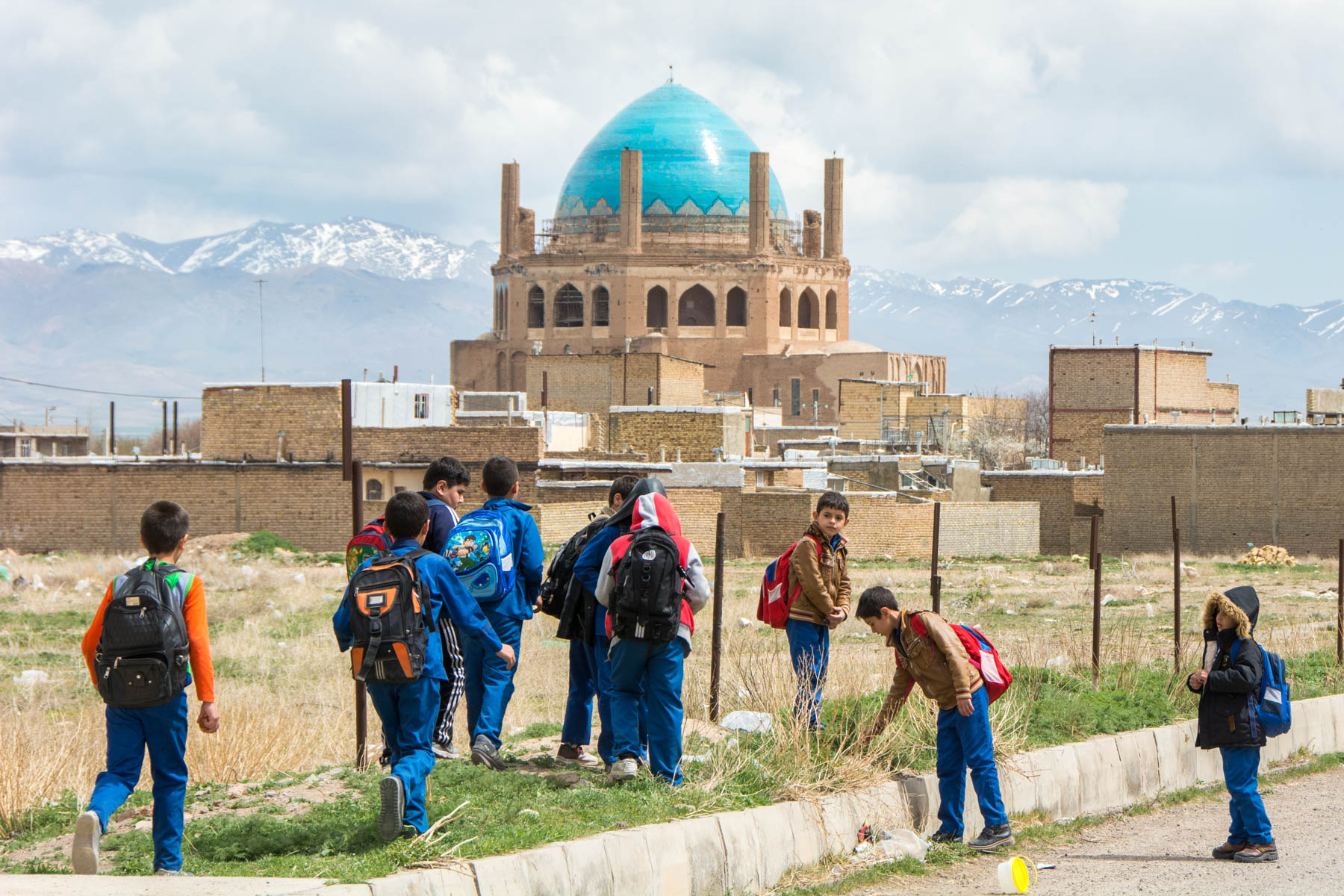
Soltaniyeh dome, the largest brick dome in the world.
Hol-land! Harderwijk!
We’re stalking down the street in the small town of Soltaniyeh, ravenous and in search of lunch, when we hear a familiar call from the doorway of a shop:
“Hello sir! Where you from?”
Sebastiaan turns around, shouting “Holland!” in reply.
The curious caller, an old shopkeeper with a golf cap and several missing teeth, beams widely.
“Hol-land! Holland!” He pokes one of his friends, who is lazily lounging on a plastic stool by the door. “Hol-land!” he proclaims to him excitedly, in case he didn’t hear him the first two times.
He looks back at us, grinning. “Hol-land… Harderwijk! Amersfoort! Rotterdam!” He rattles off the names, holding up a finger for each name. Sebastiaan and I stop, immensely impressed and curious to know more about his knowledge of relatively obscure places in the Netherlands.
The reason is quickly revealed: one of the man’s closest friends has emigrated to Harderwijk, a small town in the middle of the Netherlands. Small world.
The shopkeeper evicts his now-curious friends from their plastic perches, and offers us the seats. Thanks to the wonders of technology, we converse with him for almost an hour, using “Harderwijk”, the man’s emigrant friend, as an intermediary, via voice recordings in Dutch sent through Whatsapp.
After talking for a time, the shopkeeper procures a massive bottle of doogh, a yogurt-like drink favored by Iranians. He pours a packet of powder into it, the color of which is akin to the sickly greyish green of school cafeteria peas. As we listen to the latest voice message from Harderwijk, he shakes the bottle, mixing the concoction until it resembles a vessel of moldy milk.
We pose for a photo for with him and the doogh bottle, then accept glasses of it with smiles of thanks.

Say “doogh”!
Our time has come: we each take a healthy sip. It tastes just like it looks: like milk that has gone very, very bad.
We exchange darkly significant looks, each reading the other’s thoughts: this drink is toxic, and we need to escape. We shot our glasses of doogh like seasoned drinkers at a bar, but this only encourages the man. He grins broadly as he refills our glasses to the brim, insisting that it is a gift.
Our escape is prolonged until the doogh supply is fully depleted… by us. As we hobble out of the door, bellies sloshing with soured milk as we wave goodbye to our new friend, we reflect on how Iranian hospitality can, sometimes, be a double-edged sword.
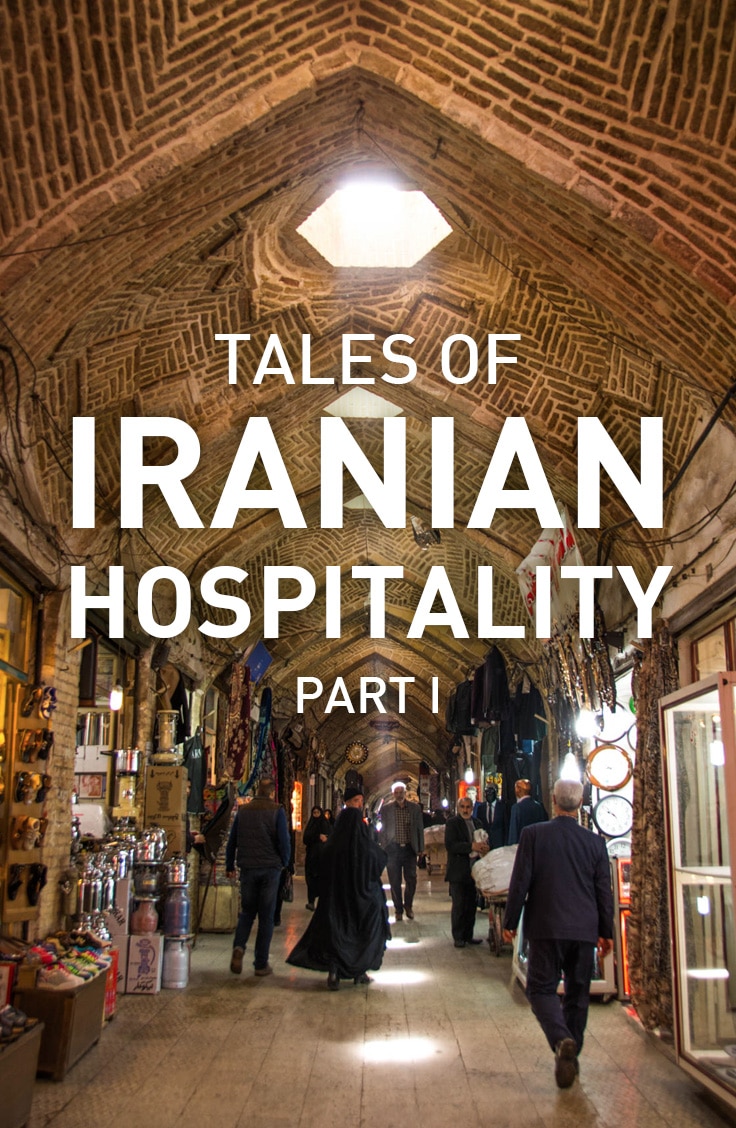
Enjoyed these stories? Pin it!
Have you traveled to Iran? How did you find the people there? Did they live up to your expectations?
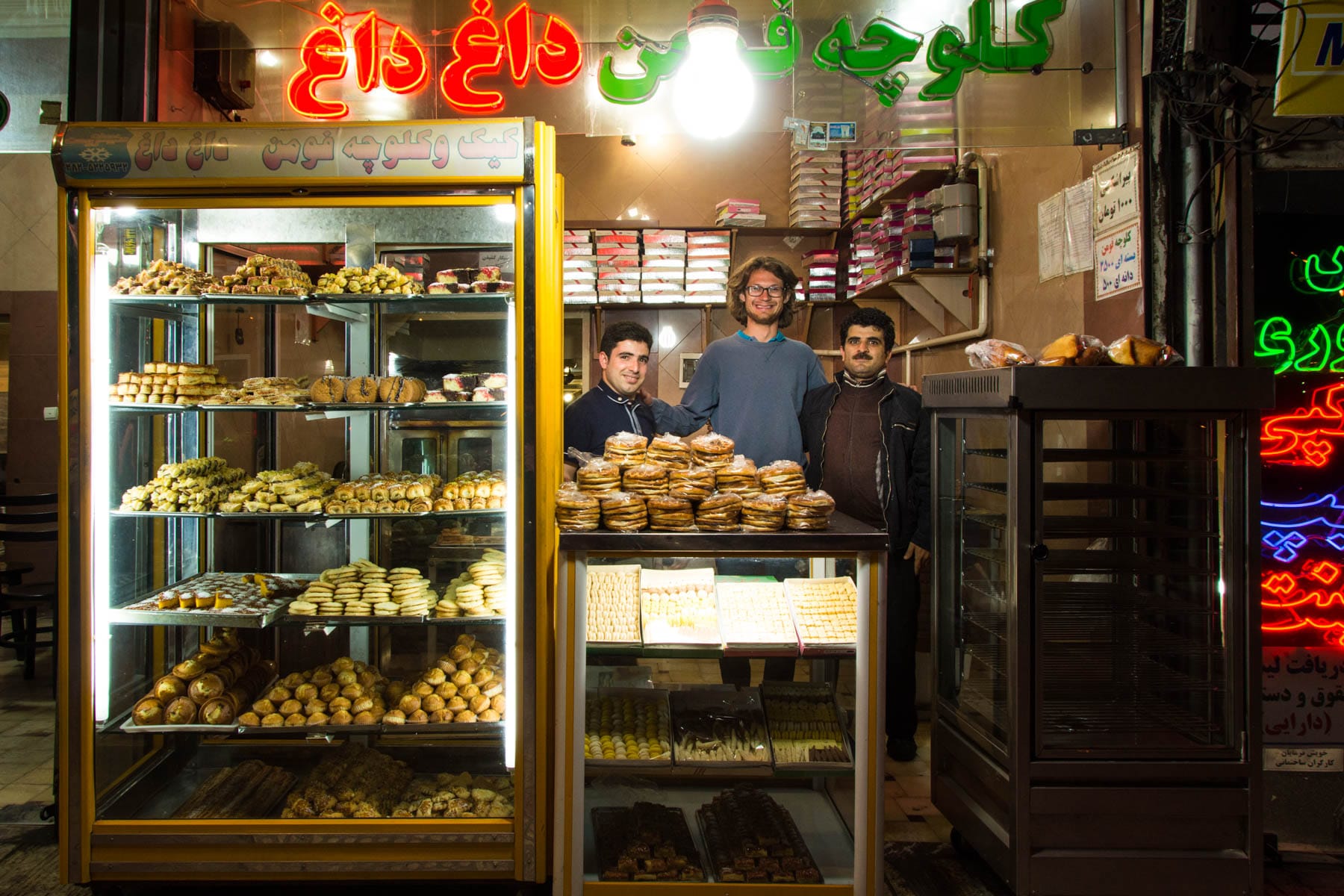
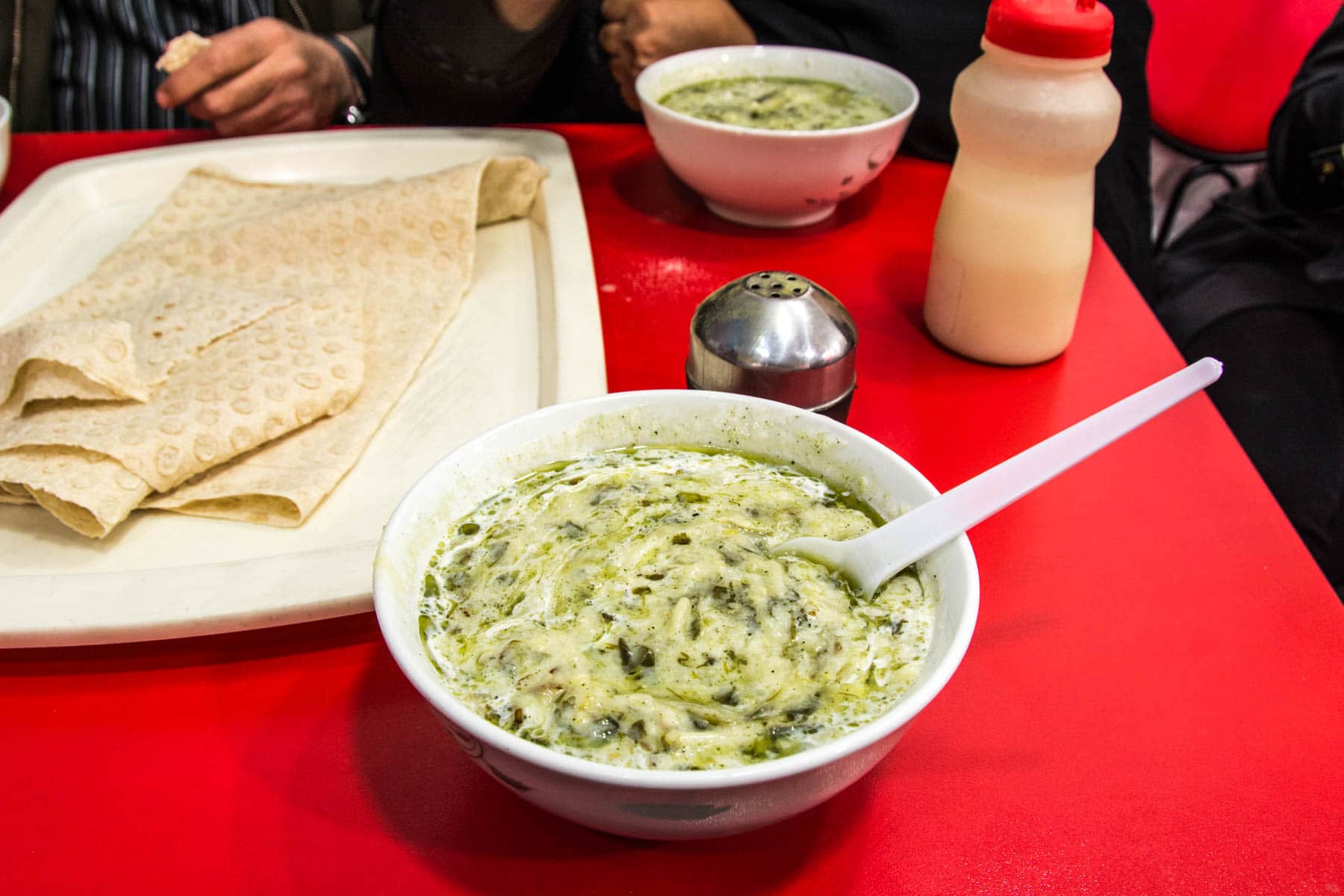
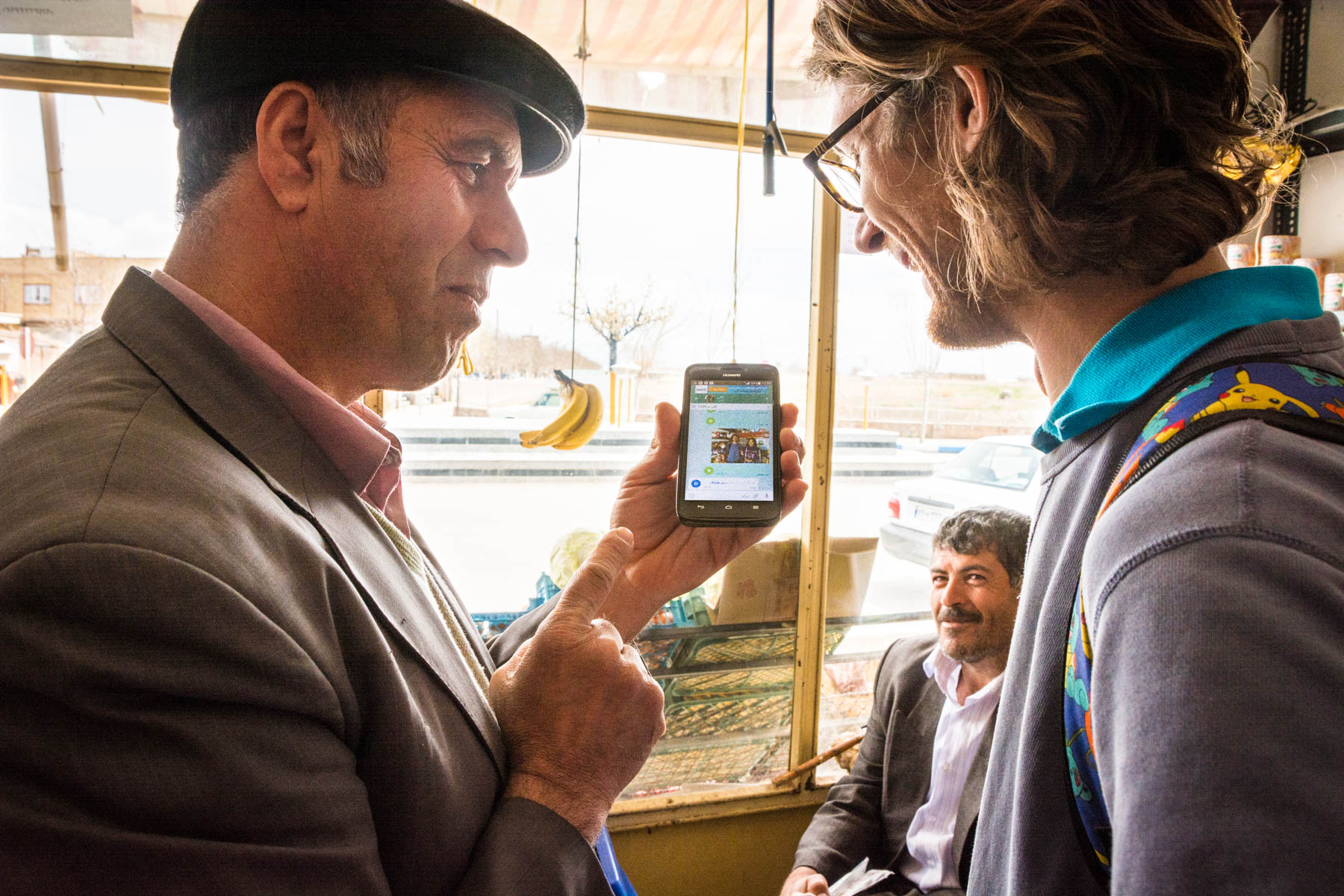


Hi.i am gonig to serch about “Iranian hospitality” and What do we do to attract tourism .can you help me ?You have traveled to Iran before، in your idea What were the deficiencies?what are your offers for being better?
I cant write english well.Excuse me . Im persian “my dear Iran” :))))
please email my answer
Hiya, thanks for reaching out. Could you sent your questions to hello@lostwithpurpose.com? It’s easier for us to answer that way.
Sent an email, please chek mail and answer me faster, I have 1 month to close this subject.
Thank you for sharing your experiences. That was cool and also attractive. Nice to hear that you enjoyed it. I hope to see you again.